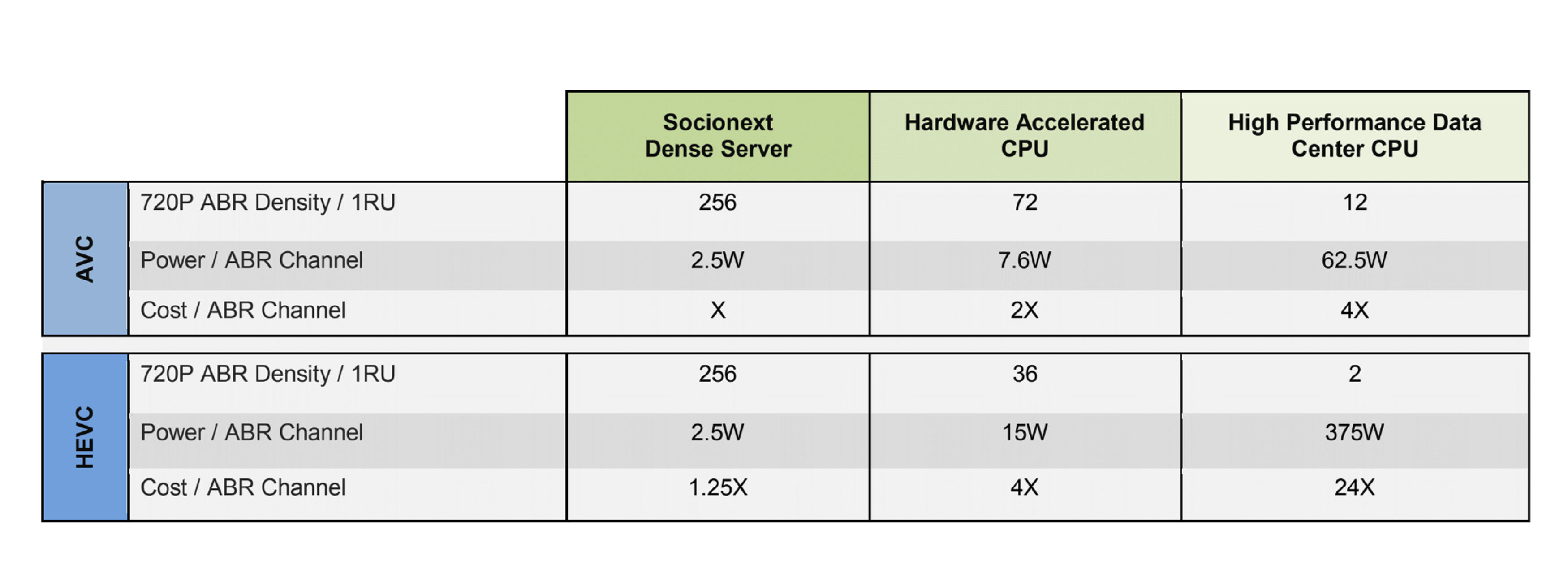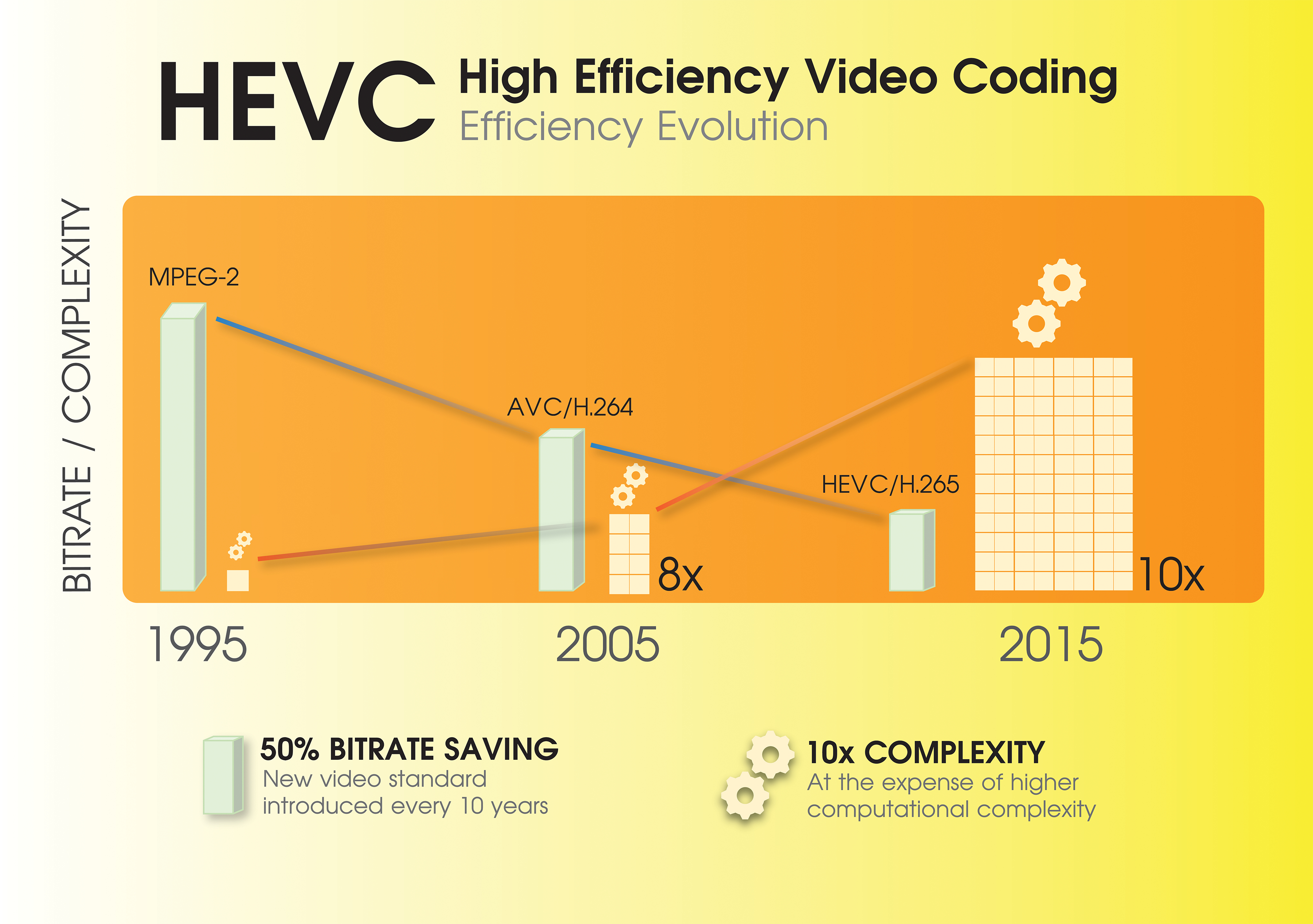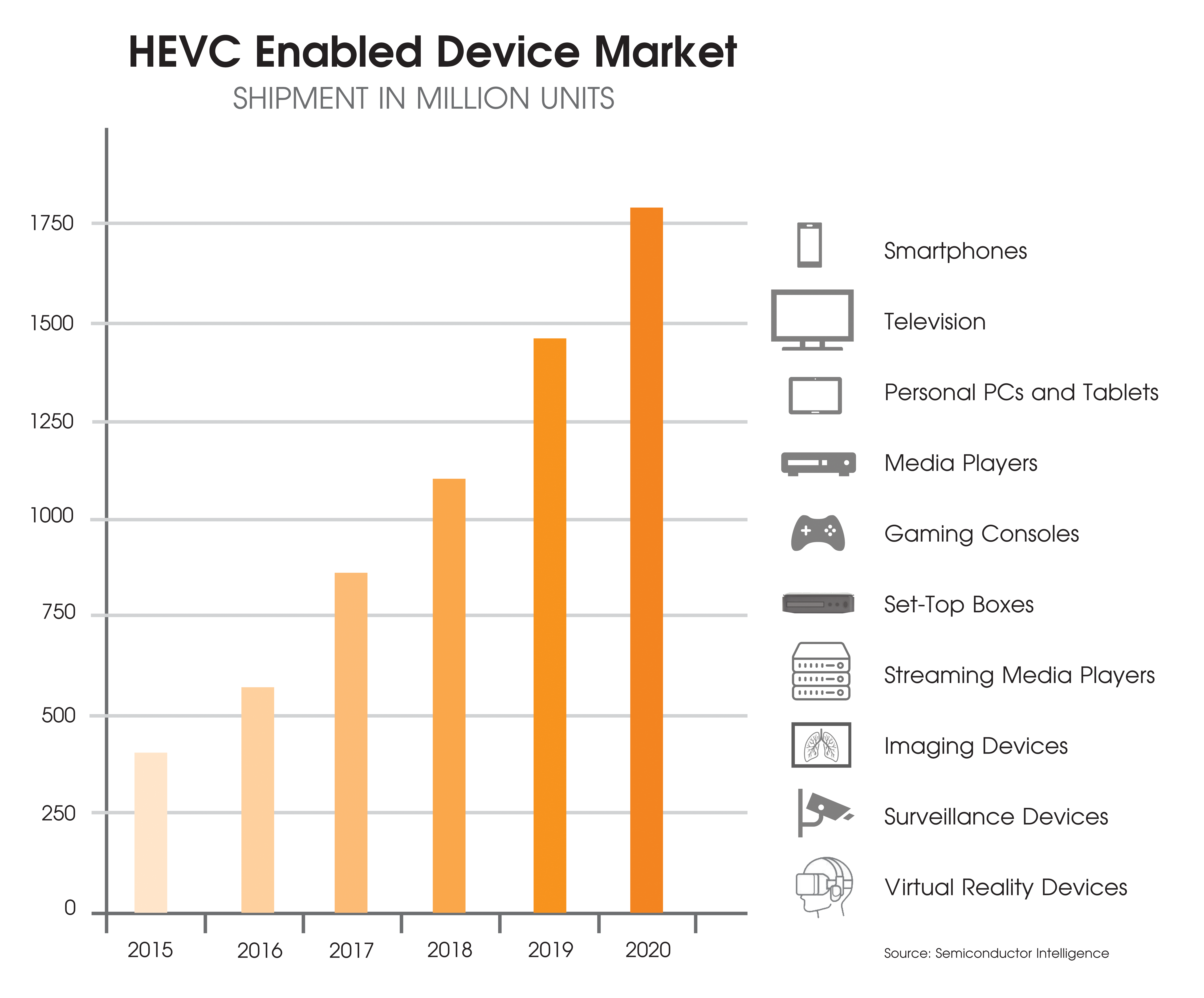High Efficiency Video Coding (HEVC), or H.265, has faced multiple obstacles since its introduction in 2013. The creators of HEVC meant it to be the heir to AVC/H.264, but the standard quickly ran into multiple headwinds. Challenges including intellectual property (IP) concerns, processing power requirements, lack of PC support, and competition from other standards have all slowed the adoption of HEVC.
Not anymore. Recent technical and industry developments are turning those headwinds into tailwinds. HEVC is charging ahead. Here is a look at why that is – and why it is good news.
Obstacles That Were Slowing HEVC Are Going Away
Most of the issues holding HEVC back no longer apply – paving the way for broader adoption of the standard.
Concerns About IP and Licensing
The concerns with IP come down to understanding the costs associated with different usage models. Apple’s mass adoption of HEVC in June 2017 shows that the industry has mostly resolved these issues.
The progress that MPEG LA and HEVC Advance have made with HEVC licensing during the past year send a clear message that many expect Velos Media to follow. Such licensing works favorably for OTT models, as well as broadcast and mobile infrastructure hardware vendors.
Steep Processing Power Requirements
HEVC needs significant processing, which until recently made it costly to implement. This, however, is no longer a factor. Various optimizations, notably hardware-accelerated decoding and (more recently) encoding, have reduced the processing power necessary for HEVC.
For example, Intel claims that their Xeon Platinum 8180 processor offers a 72% increase in HEVC performance with software encoding. This means that a dual-socket Xeon Platinum 8180 processor-based system can encode six channels of 4Kp60 HDR 10-bit video (see Intel’s solution brief PDF for more info).
Even more impressive are the gains in hardware acceleration. Socionext, for example, has teamed up with partners Advantech and SoftIron to create powerful and cost-effective dense transcode server platforms based on our Media Cloud solution. The platforms incorporate up to 32 of our MB86M30 H.265 (HEVC) Multi-Format Codec ICs into a single 1RU form factor. This means these Media Cloud-based solutions can transcode up to 32 discrete 4K/60p 10-bit channels while enabling advanced Adaptive Bit Rate (ABR) functionality. The solutions are low power, inexpensive and easy to deploy.
Contact us or our partners for product evaluation and pricing information.
Lack of PC Support
It was hard for HEVC to gain ground when end-user equipment did not support it. That is no longer the case.
PC users got HEVC support with Windows 10 coupled with an Intel Kaby Lake or equivalent newer processor. Apple added HEVC to the MacOS in 2016 and all recent models come with it standard.
Competition from Other Standards
HEVC has had to compete with MPEG2, H.264, VP9, and AV1 to gain acceptance. Let’s look at each to see why none of them should stand in the way of HEVC’s adoption:
MPEG2 and H.264 – Both these standards have significant technical limitations. Notably, neither supports high framerates (60-120fps), 4K, or HDR.
VP9 – This is a very capable codec developed by Google used for its YouTube platform. It has good hardware decoder support that has become almost as common as HEVC. Holding VP9 back is a lack of encoder hardware acceleration and support by Apple products, including the Safari browser and recently released Apple TV 4K.
AV1 – A future serious competitor for HEVC will come from AV1, a standard being developed by the Alliance for Open Media (AOM). AV1 merges the development efforts of three royalty-free video codecs – Cisco's Thor, Google's VP10, and Xiph/Mozilla's Daala – into one effort. Socionext is a member of AOM and is excitedly awaiting the final adoption of AV1 for implementation and verification. However, based on past codec releases (e.g. MPEG2, AVC, and even HEVC), it will be 2-3+ years before a product-ready solution will be available.
HEVC is the clear winner among the various competing video compression standards. The format exists today. It has widespread decoder support in recent phones, tablets, and streaming boxes as well as among major x86 vendors. And it offers substantial bit rate advantages (e.g. 35%-50% over H.264).
It is also noteworthy that many broadcasters who skipped over H.264 due to the infrastructure costs are now actively pursuing HEVC/H.265. The adoption by broadcasters does not necessarily affect streaming markets, but we have historically seen that it is not workable for the industry to invest in multiple equivalent standards. Thus, the endorsement of HEVC by broadcasters certainly gives the standard a push over its competitors.
Socionext Media Cloud: A Cost-Effective HEVC Solution for Data Centers
HEVC is here to stay – and we designed our Media Cloud solution to help data center operators cost-effectively support it.
The Socionext Media Cloud is a robust, low-cost, and easily deployable hardware transcoder solution for HEVC video streaming. The solution delivers unprecedented levels of performance with a tenfold increase in transcoding speed and efficiency, ensuring optimal streaming experiences for viewers. The Media Cloud integrates a “Sea of Transcoders” for real-time transcoding of up to 32 4Kp60 HEVC streams and up to 128 1080p60 AVC/HEVC streams with ABR in a single 1U rack system. The dense transcode solution enables maximum performance for video processing while using very minimal power.
The Media Cloud is the right solution and now is the perfect time to contact us to learn more!




